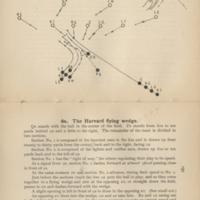
The outer ranks of the rear on the other hand swelled slightly. It was therefore well possible that the wing marched with some caution and held back a bit, so that the center stormed further and looked like a wedge. In this formation, the wingmen are at most risk.

The formation was not like a wedge but more like a rectangle with forty warriors in the first line and 1,600 men strong. Warriors who had fled were hanged or slain.Īccording to the Roman historian Tacitus, the Keil was a tightly packed crowd, strong on all sides, not only in front and back, but also on the flanks. But an army leader who survived a lost battle often forfeited his life (usually suicide). However, this was also the most dangerous point, whence the need to be heavily armoured. The most distinguished princes and their acolytes stood at the head of the Keil. Here the individual warrior tried to gain fame and glory in the battle. It was used to force the Roman forces to split and was later applied specifically to the weakest units.ĭue to the high discipline this formation required and the relatively high probability of failure, it is assumed that the front lines were filled with the best and most heavily armoured warriors of the Germanic sibbs who had to break the Roman front line. It is generally believed that the Germanic tribes were more successful with this tactic than the Celts. Keilerkopf or Keil (wild boar's head, wedge, Latin: cuneus, meaning throng) is a German phrase to describe the attack formation ("Tactical body") of the prehistoric infantry of the Celts and Germanic tribes. In the Late Roman army, several cavalry units were designated as cuneus. It was also used to great effect by the Roman legions, with the wedge proving effective in campaigns in Britain, such as during Boudicca's Revolt, where a greatly outnumbered Roman army used it to defeat the Iceni. The use of this formation enabled the concentration of missiles against a limited front and thus was used not only to smash into the enemy line, but to also add to the effectiveness of long range, usually hurled weapons like javelins and hand axes.Īs an infantry formation it is attested by Frontinus to have been used by the Romans in Pydna against the Macedonian line of Perseus. Philip II of Macedon adopted it from them as the main formation of his Companion cavalry and Alexander the Great faced Persian cavalry arrayed thus, as Arrian attests. According to Arrian and Asclepiodotus, the wedge was first used by the Scythians, and then the Thracians.

The men deployed in a triangular or trapezoid formation with the tip leading the way.

The culmination of the book comes at the famous 1912 game, when Carlisle's Jim Thorpe plays Army's Dwight Eisenhower.The wedge (έμβολον, embolon in Greek cuneus in Latin, colloquially also caput porcinum, "boar's head"), was used by both infantry and cavalry. Jenkins tells the story of these unlikely champions through the gritty games of the team's early years. They had pioneered the forward pass, the overhand spiral and other trick plays that frustrated their opponents. Pratt made a treacherous journey to the Dakota Territory to recruit Carlisle's first students, and three years later the students started a football team.īy 1907, the Carlisle Indians were the most dynamic team in college football. Richard Henry Pratt, a fierce abolitionist who believed that Native Americans deserved a place but needed to be "civilized" into American society.

The school's story begins in 1879 with Lt. The school's formative years and its legendary talent – including Jim Thorpe and Glenn Scobey "Pop" Warner – come to life in The Real All Americans: The Game that Changed a Game, a People, a Nation by Sally Jenkins. It was at this experimental boarding school for American Indians where many of today's trick plays, and even the first spiral throw, were born. Historical Society, Carlisle, Pa.Īt the turn of the 20th century, the college leading the football gridiron wasn't Harvard or Yale – it was a little-known powerhouse called the Carlisle Indian Industrial School. With the Carlisle single wing, anything could happen: a run, pass or kick.Ĭourtesy of the Cumberland Co. Carlisle player and football great Jim Thorpe (right) receives the ball.


 0 kommentar(er)
0 kommentar(er)
